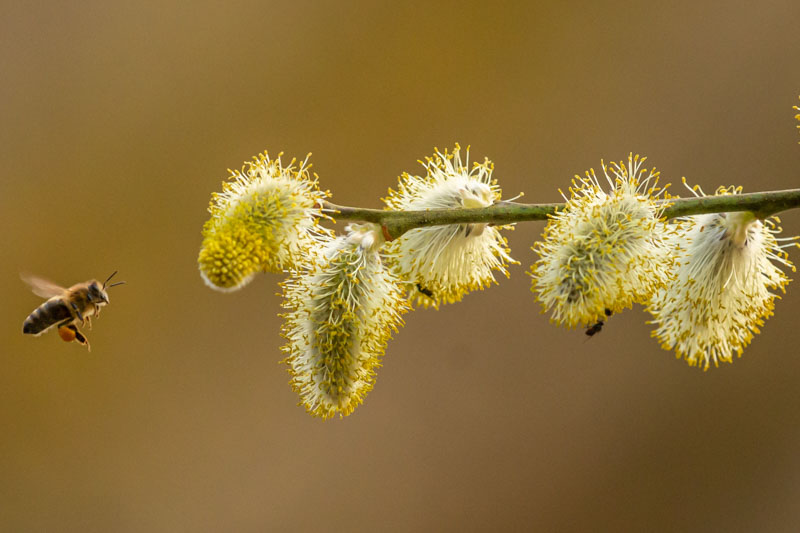Pussy willow, whether as a charming shrub or elegant tree, offers early pollen for bees and adds beauty to home decor with its soft catkins.
Pussy willow refers to a type of willow tree or shrub characterized by its soft, furry catkins that appear in early spring before the leaves. These catkins, which resemble small cats’ paws, give the plant its common name.
The catkins are actually flowers that have yet to open, covered in fine, silvery, or grayish fur, which serves as insulation to protect them from cold temperatures.
The term “pussy willow” commonly refers to several species within the Salix genus that produce the characteristic soft, furry catkins. Some of the most well-known species include:
Salix discolor – Also known as the American pussy willow or glaucous willow, it is native to North America. This species is perhaps the most commonly referenced when talking about pussy willows in the United States and Canada.
Salix caprea – Known as the goat willow or great sallow, this species is native to Europe and parts of Asia. It is another popular species often associated with the term pussy willow, especially in Europe.
Salix cinerea – Commonly known as the grey willow or large gray willow, this species is found in Europe and parts of western Asia. It is similar to Salix caprea but tends to have more of a grey tone to its catkins.
Salix gracilistyla – Known as the rose-gold pussy willow, this species is admired for its distinctive catkins that can vary in color from silver to rose-gold. It adds a unique visual appeal and is valued for both its ornamental qualities and its role in providing early pollen for pollinators.

Pussy willow, with its distinctive soft, furry catkins, serves multiple purposes beyond its ornamental value. Here are some of the key uses of pussy willow:
Decorative: One of the most common uses of pussy willow is for decoration. The branches, with their soft, silver-gray catkins, are often used in floral arrangements and springtime decorations. They can be displayed on their own in a vase or mixed with other flowers to add texture and interest.
Crafts: The branches of pussy willows are also used in various crafts, including wreath making and Easter decorations. Their unique texture and appearance add a natural and whimsical element to craft projects.
Landscaping: Pussy willow trees and shrubs can be used in landscaping for their aesthetic appeal and to add structure to gardens. They are particularly valued for their early spring interest, blooming before many other plants.

The branches, with their soft, silver-gray catkins, are often used in floral arrangements and easter decorations
Wildlife: Pussy willows provide early-season pollen for bees and other pollinators, making them an excellent choice for wildlife gardens. The catkins are among the first sources of pollen in the spring, which is crucial for bees as they emerge from winter dormancy.
Erosion Control: Some species of willows, including those known as pussy willows, are effective in erosion control. They can be planted along streambanks or in wetland areas to help stabilize the soil and reduce erosion.

A honey bee flutters near the soft catkins of a pussy willow, gracefully hovering as it collects pollen
Medicinal: In some cultures, parts of the pussy willow plant are used in traditional medicine. For example, willow bark, which contains salicin (a precursor to aspirin), has been used historically for pain relief and to reduce fevers.
Create a membership account to save your garden designs and to view them on any device.
Becoming a contributing member of Gardenia is easy and can be done in just a few minutes. If you provide us with your name, email address and the payment of a modest $25 annual membership fee, you will become a full member, enabling you to design and save up to 25 of your garden design ideas.
Join now and start creating your dream garden!
Create a membership account to save your garden designs and to view them on any device.
Becoming a contributing member of Gardenia is easy and can be done in just a few minutes. If you provide us with your name, email address and the payment of a modest $25 annual membership fee, you will become a full member, enabling you to design and save up to 25 of your garden design ideas.
Join now and start creating your dream garden!